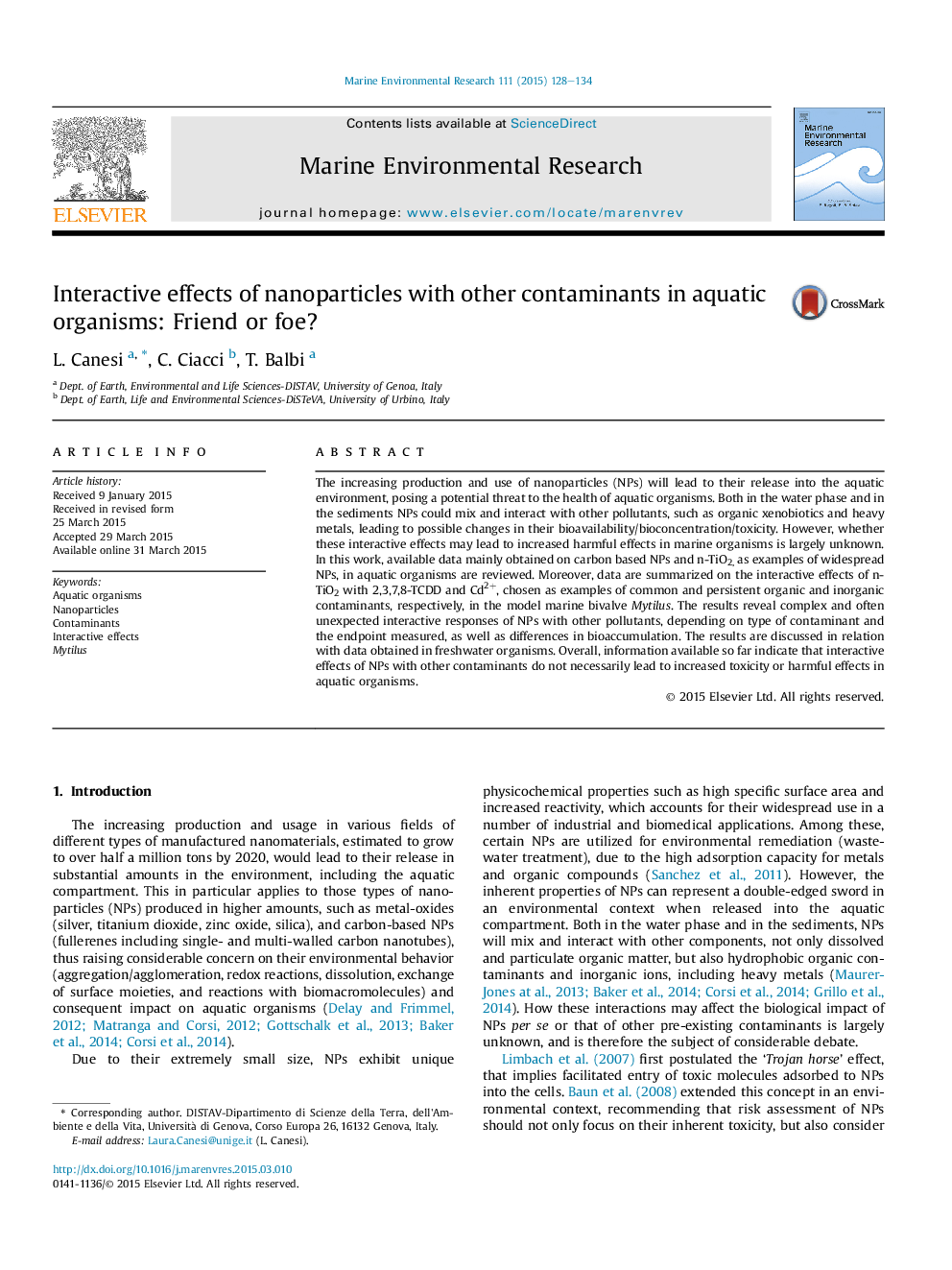| Article ID | Journal | Published Year | Pages | File Type |
|---|---|---|---|---|
| 4550678 | Marine Environmental Research | 2015 | 7 Pages |
•In the aquatic environment NPs can coexist with other pollutants.•This may result in interactive effects on bioavailability/bioconcentration/toxicity.•Data are reviewed on widespread carbon NPs and nTiO2 and metal/organic pollutants.•Complex interactive responses are observed in freshwater and marine species.•Interactive effects do not necessarily lead to increased harmful effects.
The increasing production and use of nanoparticles (NPs) will lead to their release into the aquatic environment, posing a potential threat to the health of aquatic organisms. Both in the water phase and in the sediments NPs could mix and interact with other pollutants, such as organic xenobiotics and heavy metals, leading to possible changes in their bioavailability/bioconcentration/toxicity. However, whether these interactive effects may lead to increased harmful effects in marine organisms is largely unknown. In this work, available data mainly obtained on carbon based NPs and n-TiO2, as examples of widespread NPs, in aquatic organisms are reviewed. Moreover, data are summarized on the interactive effects of n-TiO2 with 2,3,7,8-TCDD and Cd2+, chosen as examples of common and persistent organic and inorganic contaminants, respectively, in the model marine bivalve Mytilus. The results reveal complex and often unexpected interactive responses of NPs with other pollutants, depending on type of contaminant and the endpoint measured, as well as differences in bioaccumulation. The results are discussed in relation with data obtained in freshwater organisms. Overall, information available so far indicate that interactive effects of NPs with other contaminants do not necessarily lead to increased toxicity or harmful effects in aquatic organisms.
